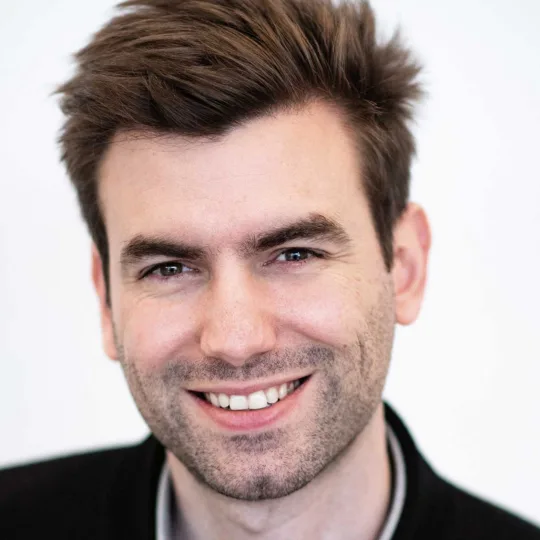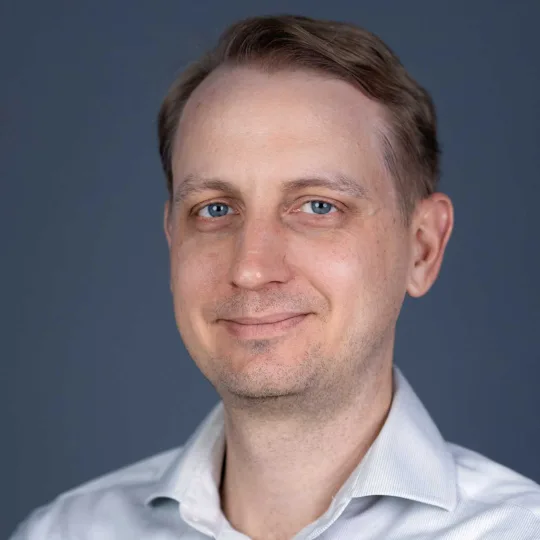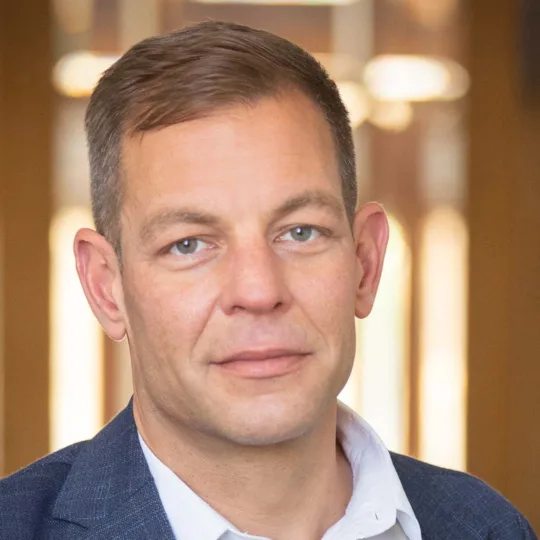Quantum Science connects the USA and Switzerland
The Swiss-US Quantum Days in October 2022 marked a new era of cooperation between Switzerland and the USA in the area of quantum research and technology. A conversation with Benjamin Bollmann and Brendan Krach (both Swissnex in Boston) and Anna Fontcuberta i Morral (EPF Lausanne).
Last year, Swissnex in Boston and New York launched the Swiss-US Quantum Days in Chicago. What was the conference’s goal?
Benjamin Bollmann: The first was to give visibility to all the excellent quantum research and innovation taking place in Switzerland. The second was to give the quantum research communities from both countries an opportunity to embark on a new era of cooperation. Just a day before joining the conference, State Secretary Hirayama signed a Joint Statement on Cooperation in Quantum Information Science and Technology (QIST) between Switzerland and the USA.
Anna Fontcuberta i Morral: The conference illustrated the excellent cooperation and common interests of the two countries in the areas of education, research and innovation. It was an opportunity for the key stakeholders –researchers, business leaders and policymakers – to meet in person, reinforce existing ties and expand their networks.
What were the main findings?
Benjamin Bollmann: We think the conference sent a strong strong signal regarding Switzerland’s commitment to international cooperation and exchange. As a pilot initiative, we curated a medium size group of about 85 participants that allowed for extensive and intimate exchange. Like so much of what Swissnex does, we aim to spark connections that pay off down the road.
Anna Fontcuberta i Morral: While researchers in the area of QIST know each other relatively well, they are usually less familiar with activities in the domains of education and society as a whole. The latter include, for example, outreach in elementary and high schools, or education of apprentices and the technical workforce. The researchers discovered more about these efforts, become inspired and discussed ways to contribute to the evolution of society and education.
Brendan Karch: Many Swiss researchers had the chance to learn more about the outstanding quantum ecosystem being built in Chicago and the surrounding State of Illinois. They also considered new avenues of cooperation. So far, over half a dozen specific follow-up contacts have resulted from this.

Anna Fontcuberta i Morral is professor in materials science and physics at EPFL. She is a member of the SNSF Research Council and president of the specialized committee on International Cooperation. She is also a member of SCNAT’s Swiss Quantum Commission. Photo: Dirk Grundler.

Benjamin Bollmann has been CEO of Swissnex in Boston and New York since 2020. Benjamin is a graduate of ETH Zurich and conducted neuroscience and AI research at MIT.

Brendan Karch joined the Swissnex office in Boston in 2021 as Head of Academic Engagement. He was previously an Associate Professor of Modern European History at Louisiana State University.
This initiative was supported by the ETH Board. Why was this collaboration so important?
Brendan Karch: American scientists have often heard of ETH Zurich or EPFL, but we wanted to make sure they understood the depth of quantum excellence across the whole ETH Domain. This includes the new quantum computing hub at the Paul Scherrer Institute, for example, run jointly with ETH Zurich as well as the groundbreaking Masters in Quantum Engineering Program that was initially launched at ETH Zurich and is now also offered at EPFL. Of course, we cast a wide net, as there are many centers of excellence in quantum science and technology outside of the ETH Domain, most notably in Basel and Geneva.
Anna Fontcuberta i Morral: It is my understanding that quantum science is one of the top priorities of the ETH Domain. We have seen a significant investment of resources in this area, particularly through National Centres of Competence in quantum research. These programs benefit not only institutions within the ETH Domain, but also many other academic institutions.
Switzerland and the USA signed the previously mentioned declaration to strengthen cooperation in the QIST field. What is the relevance of this declaration?
Anna Fontcuberta i Morral: The signing was followed by discussions with the US National Science Foundation on how to further increase the funding of the cooperation between our two countries. A new agreement opened the possibility for joint projects starting in 2023, including in the field of quantum science. This is extremely encouraging, especially in times where collaboration with European countries in the domain of quantum is difficult, also keeping in mind that the USA and Switzerland are the countries with the highest scientific impact in the domain.
Benjamin Bollmann: Quantum technology is rapidly becoming part of the global race for dominance in the next industrial revolution. Countries are developing national strategies and making large outlays. But no country can do it alone – especially a small one like ours. In 2022 Switzerland took part in two 12-country roundtable talks on quantum science and technology organized by the US. Concurrent with these efforts, SERI saw value in creating a bilateral framework for cooperation with the US.
Swissnex in Boston and New York is connecting Switzerland, North America and the world in education, research, innovation, and the arts.
What are the obstacles, if any, that may affect cooperation between Swissnex and the ETH Domain?
Brendan Karch: Quantum scientists and innovators are incredibly busy, and have urgent day-to-day concerns running their labs or businesses. Convincing over twenty quantum actors to travel from Switzerland to Chicago for a relatively short conference, in the middle of the semester, took significant legwork and relationship building. Ultimately, I think the conference demonstrated the value of international cooperation across sectors.
Anna Fontcuberta i Morral: One obstacle is the absence of a single institution that really represents each country from the researcher’s point of view. On the Swiss side this has now been solved thanks to the Swiss Quantum Initiative and its commission. For the next Swiss-US Quantum Days event, we could possibly extend the already existing network by including even more Swiss researchers.
What will be the role of both Swissnex and the ETH Domain in promoting international cooperation in quantum research moving forward?
Benjamin Bollmann: Quantum science and technology will continue to be a big priority for us in 2023. At Swissnex we’re shifting to working on a more “systemic” level in selected focus areas like quantum. Swissnex has always worked to connect individuals and organizations with each other across borders. For quantum science and technology, this systematic effort requires close coordination with institutions such as the ETH Board as well as with the newly established Swiss Quantum Initiative. We are also planning to expand our bilateral conference in a multilateral direction by working through the global Swissnex Network, where many independent quantum activities are also being developed.
Anna Fontcuberta i Morral: The ETH Domain continues to invest heavily in quantum excellence and innovation. Cooperation with the USA is facilitated through the SNSF and its programs. A good example of this is the lead-agency program launched in 2023.
What areas will Swissnex Boston and New York focus on in 2023?
Benjamin Bollmann: Our two other focus areas are health and climate. In health, we support early-stage biotech and medtech start-ups to explore opportunities on the US market. The BIO International Convention in Boston this June will be an important milestone for us in this regard. When it comes to climate and sustainability, we launched a new program bringing together Swiss and US start-ups to learn from each other in New York last fall. This year, in partnership with Innosuisse we intend to scale this initiative up to include both Boston and New York, which are two major innovation hubs in this area. We also intend to focus on conceptual design work and how it can help us find new patterns of thinking and solutions to sustainability challenges.
Contact
Author



